
The Royal Humane Society is a British charity which promotes lifesaving intervention. It was founded in 1774 as the Society for the Recovery of Persons Apparently Drowned, [1] for the purpose of rendering first aid in cases of near drowning. [2]

The Royal Humane Society is a British charity which promotes lifesaving intervention. It was founded in 1774 as the Society for the Recovery of Persons Apparently Drowned, [1] for the purpose of rendering first aid in cases of near drowning. [2]
In 1773, physician William Hawes (1736–1808) began publicising the power of artificial respiration and tobacco smoke enemas to resuscitate people who superficially appeared to have drowned. For a year he paid a reward out of his own pocket to any one bringing him a body rescued from the water within a reasonable time of immersion. Thomas Cogan, a fellow physician, who had become interested in the same subject during a stay at Amsterdam, where was instituted in 1767 a society for preservation of life from accidents in water, joined Hawes in his crusade. In the summer of 1774 Hawes and Cogan each brought fifteen friends to a meeting at the Chapter Coffee-house, St Paul's Churchyard, when the Royal Humane Society was founded. [2]
Gradually, branches of the Royal Humane Society were set up in other parts of the country, mainly in ports and coastal towns where the risk of drowning was high and by the end of the 19th century the society had upwards of 280 depots throughout the United Kingdom, supplied with life-saving apparatus. The earliest of these depots was the Receiving House in Hyde Park, on the north bank of the Serpentine, which was built in 1794 on a site granted by George III. Hyde Park was chosen because tens of thousands of people swam in the Serpentine in the summer and ice-skated in the winter. Boats and boatmen were kept to render aid to bathers, and in the winter ice-men were sent round to the different skating grounds in and around London. The society distributed money-rewards, medals, clasps and testimonials, to those who save or attempt to save drowning people. It further recognised "all cases of exceptional bravery in rescuing or attempting to rescue persons from asphyxia in mines, wells, blasting furnaces, or in sewers where foul gas may endanger life." [2]
The Royal Humane Society established commonwealth branches in Australia in 1874, in Canada in 1894, and in New Zealand in 1898. [3]
The society is now a registered charity whose motto is lateat scintillula forsan, "a small spark may perhaps lie hid." [2] The Society's president is Princess Alexandra of Kent.
Since its foundation, the Royal Humane Society has made more than 85,000 awards. Financial rewards are no longer given, nor does the society give advice on how to save life; however, the awards granted include bronze, silver and gold medals and Testimonials on Vellum or Parchment. The Society may also recognise those who have contributed to the saving or attempted saving of life, though they may not have put their own life at risk. In these instances, a Certificate of Commendation may be granted. In addition, Resuscitation Certificates may be granted to those who, though not professionally trained to do so, carry out a successful resuscitation. [4]

Between 1776 and 1998, approximately 135 gold, 1,336 silver and 11,230 bronze honorary medals were awarded by the Society. Current awards are divided into two classes of medal, and certificates / testimonials. [5]
Although not official awards, the medals are permitted to be worn on the right chest in uniform by members of the British armed forces and civilian services. [6]

Mouth-to-mouth resuscitation, a form of artificial ventilation, is the act of assisting or stimulating respiration in which a rescuer presses their mouth against that of the victim and blows air into the person's lungs. Artificial respiration takes many forms, but generally entails providing air for a person who is not breathing or is not making sufficient respiratory effort on their own. It is used on a patient with a beating heart or as part of cardiopulmonary resuscitation (CPR) to achieve the internal respiration.
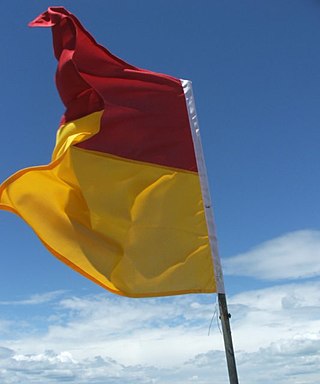
A lifeguard is a rescuer who supervises the safety and rescue of swimmers, surfers, and other water sports participants such as in a swimming pool, water park, beach, spa, river and lake. Lifeguards are trained in swimming and CPR/AED first aid, certified in water rescue using a variety of aids and equipment depending on requirements of their particular venue. In some areas, lifeguards are part of the emergency services system to incidents and in some communities, lifeguards may function as the primary EMS provider.

Padstow Lifeboat Station has been at Trevose Head west of Padstow, Cornwall, since 1967. Before that it was at Hawker's Cove on the Camel estuary between the town and the sea. The lifeboat station is run by the Royal National Lifeboat Institution (RNLI), and since 2006 has been the base for Tamar-class RNLB Spirit of Padstow.
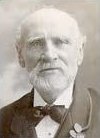
Henry Watts was a Sunderland sailor and diver, who rescued over 40 people from drowning during his lifetime – and assisted in the rescue of another 120 people.

The Sea Gallantry Medal (SGM), is a United Kingdom award for civil gallantry at sea.
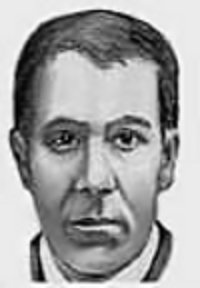
Mark Anthony Addy AM was a publican and champion oarsman, from Manchester, England, who was awarded the Albert Medal (AM), and a number of other honours, for the rescue of over 50 people from the then highly polluted River Irwell in the 19th century. The Albert Medal was later superseded by the George Cross as the highest civilian or non-combat gallantry award in the British honours system.
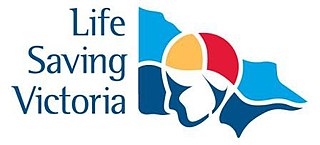
Life Saving Victoria is an Australian life saving organisation formed in 2002 from a merger of the Victorian Branch of the Royal Life Saving Society Australia and Surf Life Saving Victoria. Life Saving Victoria works to prevent drownings and other water related deaths and injuries in Victoria. Life Saving Victoria teaches local communities in Victoria about water safety, swimming and resuscitation. It also provides surf life saving services and patrols for beaches across the state. Life Saving Victoria is an emergency support agency to Victoria Police for water based emergencies.
The Society for the Protection of Life from Fire was formed in 1836 for the purposes of preserving life from fire by providing fire escapes, and attendants at around seventy London locations. In 1865 the Society, including its equipment and staff, was incorporated into the fire brigade run by the Metropolitan Board of Works, the precursor of the modern London Fire Brigade. The Society has continued to exist and now recognises people who perform acts of bravery in rescuing others from the life-threatening effects of fires in the United Kingdom.
The Royal Humane Society of Australasia (RHSA), formerly the Victorian Humane Society, is an Australian charity dedicated to the recognition of those who risk their own lives in saving or attempting to save the lives of others. It also provides assistance to persons injured as a result of their bravery, or to their next of kin if they perished in the attempt.

Appledore Lifeboat Station is the base for Royal National Lifeboat Institution (RNLI) search and rescue operations at Appledore, Devon, England. The first lifeboat was stationed in the town in 1825 and the present station was opened in 2001. It operates a Tamar-class all-weather boat (ALB) and an Atlantic 85 B Class inshore lifeboat (ILB).

The Stanhope Medal or Stanhope Gold Medal is an international award given annually by the United Kingdom's Royal Humane Society for the most courageous and heroic rescue that was made in the previous year. It is named in memory of British Royal Navy officer Chandos Scudamore Scudamore Stanhope, who performed several life-saving events during his lifetime.
Edward Percy Blow, known as Percy, Corky, or Corkie Blow, was an English professional footballer who made 162 appearances in the Football League playing for Lincoln City. He also played non-League football in the Lincolnshire area. He played as a left half. While still a boy, he was honoured by the Royal Humane Society for saving the life of another child.

Joseph Ray Hodgson was an Englishman hailed as a hero dozens of times after risking his life to save people from drowning, often during a winter storm in the North Sea. He was nicknamed "The Stormy Petrel", after the storm petrel seabird, because whenever a gale blew up, he could be seen on Sunderland pier searching the skyline for ships in distress in order that he might help. Hodgson was living and working in Sunderland at the same time as the diver, Harry Watts, who was also famed for saving lives.

Trearddur Bay Lifeboat Station is located in Trearddur, Anglesey, Wales and opened in 1967 as an inshore lifeboat station.
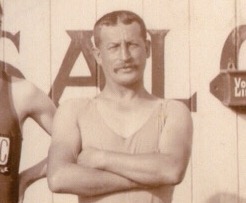
William Adams was a lifesaver, swimmer and swimming instructor from Gorleston on the east coast of England. He made his first rescue at the age of 11 and went on to save a total of 140 lives from drowning. He is one of only four people to have received the Royal Humane Society bronze medal with three clasps. William Adams also has the distinction of appearing twice in the Carnegie Hero Fund Roll of Honour. He was known as "The Hero of Gorleston Pier" and also as "Professor" Adams in recognition of the expert swimming tuition he provided.

David "Dawsey" Kewley was a Manx boatman, member of the Douglas Rocket Brigade and volunteer in the Lifeboat Service, renowned for his involvement in the saving of lives at sea. Reports of the number of people he saved from drowning vary. According to some contemporary reports he saved as many as 38 lives, according to others 25, but it is generally recognised that he was directly involved in saving the lives of at least 23 people, and as a member of the Douglas Lifeboat Crew assisted in the saving of many more. He was a recipient of numerous awards from the Royal Humane Society for his life-saving exploits. Although a man of dauntless courage, he would never speak about his feats and disliked hearing other people talk about them.

Plymouth Lifeboat Station is the base for Royal National Lifeboat Institution (RNLI) search and rescue operations at Plymouth in England. The first lifeboat was stationed in the city in the early 1800s. The station moved to its present site at Millbay Docks in 1992, a Grade II-listed three-storey tower. Since 2003 it has operated a Severn-class all-weather boat (ALB) along with an B-class Atlantic inshore lifeboat (ILB).

Barmouth Lifeboat Station is located in Barmouth, a town at the mouth of the Afon Mawddach river in Gwynedd, Wales. A lifeboat was first stationed here by the Royal National Institute for the Preservation of Life from Shipwreck (RNIPLS) in 1828.
A number of awards have been established by the Royal National Lifeboat Institution (RNLI) since its creation in 1824. None are approved by the Crown, and are therefore unofficial awards. As such, they do not appear in the official British order of wear, although the principal lifesaving award, the Medal of the RNLI, can be worn on the right breast in uniform by members of the British armed forces.

Mary Wheatland was a swimming instructor, bathing machine keeper and life-saver. Wheatland who was credited with saving over 30 lives and was a recipient of the Royal Humane Society's Bronze Medal and testimonial on vellum.